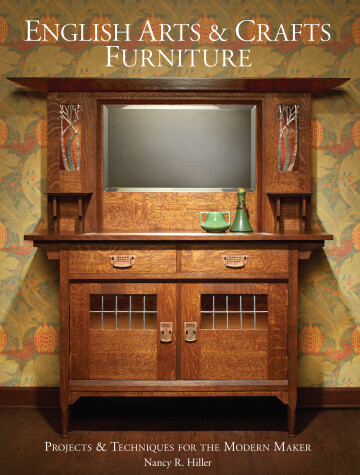Reviewed by annieb123 on
English Arts & Crafts Furniture is a powerhouse of a new project book from author Nancy R. Hiller and publisher F+W Media. I'm a collector of woodworking project books. Most project books tend to be straight to the point with pictures, materials lists and some tutorial info. This book is quite different.
The included projects are presented with comprehensive historical background on the creators and designers along with templates and rough isometric sketches. There are good clear tutorial photos showing construction details to fill out the accompanying instructions. Materials lists are complete and detailed. The historical and biographical information is what really sets this book apart. I was surprised to find how much I enjoyed reading it cover to cover and devouring the history and lore behind the pieces. I loved the old photos and seeing the furniture in its natural environment.
This is emphatically not a beginner's book. There is no hand-holding here. The instructions and tutorials presuppose a good working knowledge of woodworking along with access to a variety of tools. The projects are complex and quite demanding (but oh so gorgeous). The aesthetic of these pieces appeals to me on a visceral level.
The projects are interwoven with background information for each one and they get their own complete chapters in the book. By my rough count, a little less than 50% of the content is actually devoted to the projects; the rest is history, philosophy and biographical information. There are three projects included: Voysey Two Heart Chair, Harris Lebus Sideboard, and the Gimson Hayrake Table. They are all three beautifully made inspiring pieces and worthy of the effort.
One thing which is absolutely vital in design is understanding context and the philosophy behind the things we create. If the only criterion for making something on which to sit were functionality, we could chop a slice out of a tree trunk and call it a day. The furniture we use and love most on a daily basis didn't just spring fully blown into existence. It evolved and were designed (hopefully) with functionality and some philosophy and design. This book does a stellar job of speaking to that 'soul' of creativity and philosophy.
The author's writing style is somewhat academic but gently humorous and easy to read. The research and the historical notes are uniformly good. I'm very impressed.
The book is 144 pages, hardcover format.
Five stars
Disclosure: I received an ARC at no cost from the author/publisher.
Reading updates
- Started reading
- Finished reading
- 20 May, 2018: Reviewed
